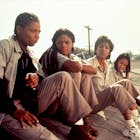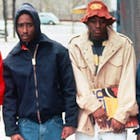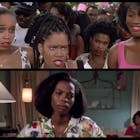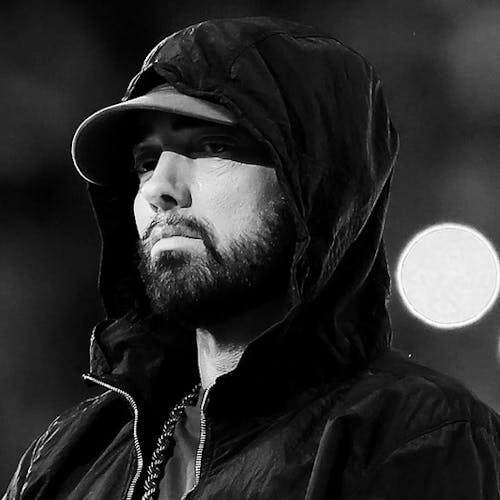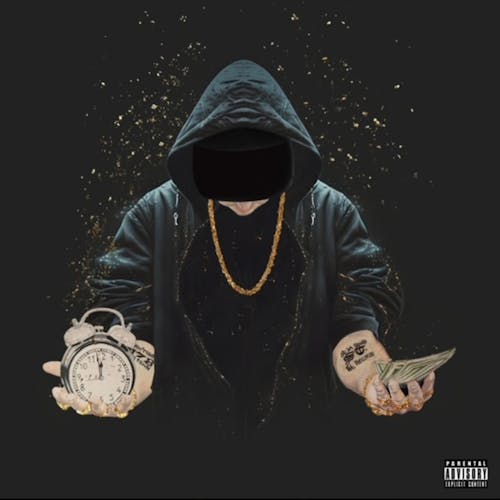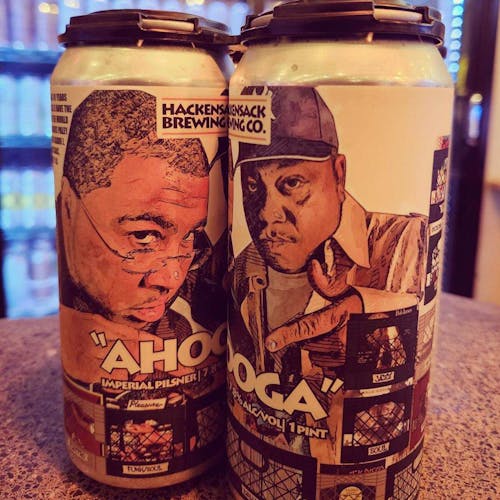
'Hangin' With the Homeboys': Badass Bronx Brilliance
'Hangin' With the Homeboys': Badass Bronx Brilliance
Published Tue, May 25, 2021 at 10:22 AM EDT
Joseph B. Vasquez just wanted to make a movie about his youth.
In the early 1990s, an entire generation of urban filmmakers like Vasquez were telling such stories; whether it was a young John Singleton breaking down what it was like growing up in South Central Los Angeles; or Matty Rich giving it to you straight about project life in Red Hook, Brooklyn. Vasquez was a product of the South Bronx, and he wanted to tell his own stories that reflected life in "The Boogie Down."
His first film was The Bronx War; about warring Latino and Black gangs, it debuted in 1990. That movie garnered Vasquez enough film festival attention to attract New Line Cinema; and Vasquez pitched the studio a script he was working on based on the Friday nights of his post-adolescent years in the Bronx. New Line would agree to finance and distribute his new film.
That film would be Hangin' With The Homeboys, a low-budget dramady starring John Leguizamo, Mario Joyner, Doug E. Doug and Nester Serrano as four friends cruising the Bronx on a Friday night.

These four friends; Johnny, Willie, Fernando (aka "Vinny") and Tommy, experience the drama of New York City and the strains of outgrowing each other over the course of their night on the town. Leguizamo is the insecure and naive Johnny, lovestruck over a woman he hardly knows; Joyner is Tom, an aspiring actor who is dealing with his own failing relationship; Serrano is "Vinny," a Puerto Rican lothario with an identity crisis; and Doug E. Doug is the perpetually-unemployed Willie, who believes that every hard break he has in life is due to his race.
...Homeboys stands out as a bit of an anomaly in early 90s urban cinema. It's not the kind of "growin' up in the hood" movie that ends in tragedy and these guys aren't teens trying to "make it out" of violent circumstances; they're older and the night's stakes have more to do with getting into parties than getting out of "the hood." But ...Homeboys also doesn't fit neatly alongside the "keepin' it real" comedies like Strictly Business and Mo' Money that were also popular at the cineplex during this time. The guys' romantic entanglements are more subtext than major plot points, and the tone doesn't always go for laughs.
The movie's four leads were promising young actors who'd begun making noise in Hollywood. John Leguizamo had appeared on the hit TV series Miami Vice and in Madonna's "Borderline" music video before garnering major attention in 1989's wrenching Vietnam drama Casualties Of War. A hot up-and-coming standup comedian, Mario Joyner had done some hosting for MTV and garnered small film roles; while Nestor Serrano made an appearance alongside Tom Hanks in The Money Pit and also appeared in Die Hard 2. Also starting out in standup comedy, Doug E. Doug was at the very beginning of his film career.
Vasquez's friends and South Bronx upbringing served as inspiration and backdrop. He'd been born the son of two heroin addicts and was raised by his grandmother, and at eight years old, began shooting home movies on a family member's super-8 camera. He would eventually graduate from the City College of New York with a degree in filmmaking in 1983. When New Line Cinema came calling, Vasquez wrote the script for Hangin' With the Homeboys in just three days.
In the story, over the course of this eventful Friday night, we see the homeboys grappling with questions of identity, their individual futures and their overall sense of self. With four leads of Black and Latino backgrounds, ...Homeboys doesn't shy away from race; but it presents race and racism through an undeniably New York City lens. One scene deals with the anti-Black racism of Puerto Ricans at a house party the guys con their way into. It highlights tensions even within the four young men's friendship; as Willie erupts in a rage, having been tossed from the party after unsuccessfully attempting to convince patrons he was Dominican. Vinny's major character conflict centers on his unwillingness to acknowledge himself as Puerto Rican, demanding that friends don't call him by his birth name of "Fernando," as he's adopted an Italian "ladies' man" persona. He's selfish and talks down on his friends, especially Johnny, whom he sees as a pushover who needs to grow up and be tougher. When the guys get arrested, it's Vinny who is humiliated by an Italian police officer who wants to know why he doesn't go by the name on his driver's license.
With four leads of Black and Latino backgrounds, the movie doesn't shy away from race. But it presents race and racism through an undeniably New York City lens.
DROP YOUR EMAIL
TO STAY IN THE KNOW
"You," the racist cop sneers after a terrified Tom explains Vinny's identity crisis, "will never be Italian. Scum like you could never be in the same company as me."

The racial makeup of the four leads has always made Hangin' With the Homeboys unique compared to the aforementioned "hood" movies of the early 1990s. Like so many Black and Latino kids in the Bronx, race strains at their relationships internally while also weighing on them from the outside in the form of bigoted police officers and, as the crew makes their way into Manhattan, in the form of elitist nightclub bouncers. But over the course of one crazy night, these four soon realize that their friendship is most tested by the fact that they are clearly growing apart. The most poignant theme of Vasquez's film isn't "bro-manticized" loyalty, it's maturing enough to know when it's time to cut certain people loose from your life.
On May 24, 1991, Hangin' With The Homeboys premiered in New York City to rave reviews and critical praise for Vasquez, following high kudos at that year's Sundance Film Festival. The Hollywood studios were gushing over Black/Latino urban films and Vasquez seemed primed for a major breakthrough.
But reckoning with fame and money proved to be difficult for the young director. He was temperamental and at times erratic, but those who worked on the movie dismissed any strange behavior. He was reportedly given six figures from New Line for a followup movie. However, things seemed to spiral downward after Vasquez was randomly assaulted on the subway. A deranged man slashed his face with a knife, an incident the manic depressive Vasquez struggled to recover from, mentally and emotionally.
”He made rude comments to women and he could be a little abrupt,” Nestor Serrano recalled in 1996. ”But it was clear he was really talented. And everything went okay until he got cut.” Even before finishing ...Homeboys, Vasquez suddenly went from erratic to confrontational.

”When we had the premiere in New York, he got up and said, ‘I want to thank the people at New Line because they have the best drugs,'” Serrano told EW. ”He never even touched drugs! He was trying to get attention, be like Spike Lee and say the wrong thing at the right time. But it came out ugly.”
Following the success of ...Homeboys, Vasquez was offered the job of directing the first sequel to the 1990 hit House Party, but declined. He also hadn't disclosed to virtually anyone that he was HIV positive. He would only direct one more film, Manhattan Merengue, before his death at age 33. Manhattan Merengue was only released to the festival circuits; as Vasquez descended into a haze of mental illness. There are stories of him running naked through his apartment building, making outlandish claims to former friends and coworkers. He moved to California and rented a home with a cadre of homeless people, calling himself "Jesus Christ" in a house that friends said was filled with dog feces and vagrants. It was Joseph's long-estranged mother, Delores, who would take him in an attempt to help him get his life together. But Joseph Vasquez died in the December of 1995.
The promising young filmmaker's legacy remains almost solely connected to Hangin' With the Homeboys. The film's heart and soul brims with an authenticity that was born of Vasquez's experiences. A typical story with atypical turns, one part American Graffiti and one part Do The Right Thing, it's recommended viewing even if you're too young to remember 1991 and have never lived in the South Bronx. It's always been a uniquely urban tale worth telling. And it's also an enduring reminder of the brilliance of a Bronx kid who wanted to tell Bronx stories. We never got to see the best of Joseph Vasquez, but Hangin' With the Homeboys remains an inspiring look at a young director on the cusp of a breakthrough. It's so bittersweet that it's success wound up breaking him.
